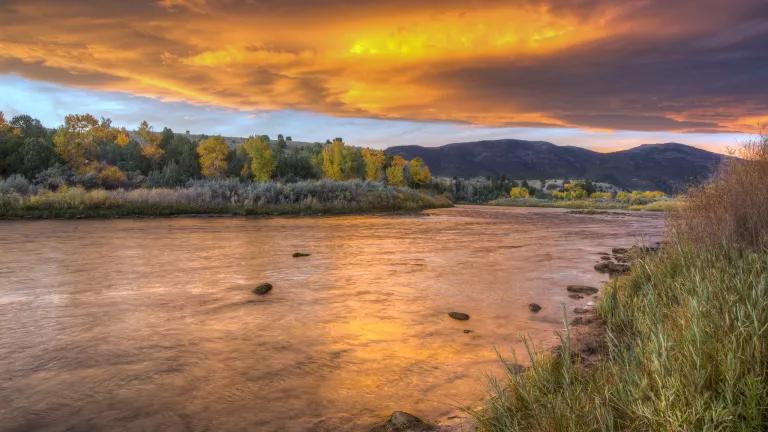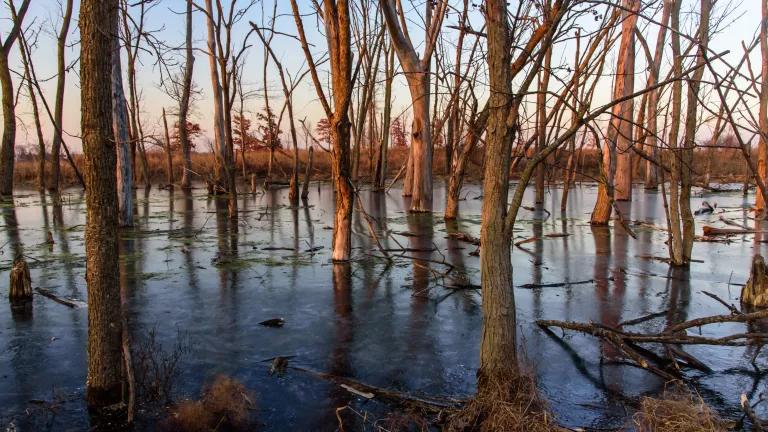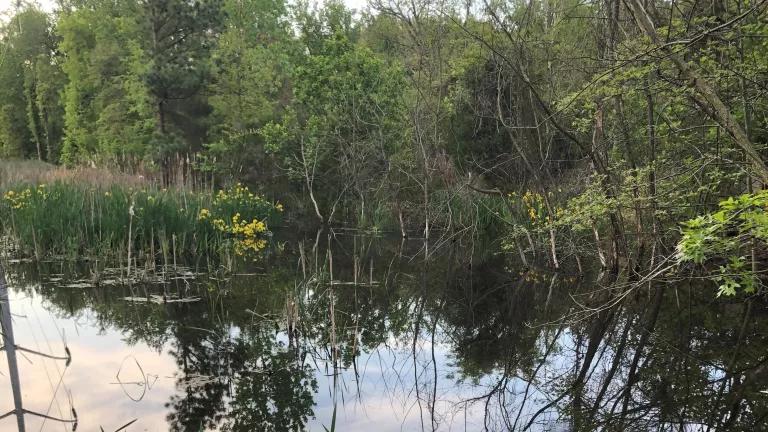Funding to Protect New Mexico’s Waters Improves, More Needed

These are unprecedented and challenging times, with the government's attention focused elsewhere as it should be. However, these are also times to look ahead, and consider what is necessary and possible when we emerge from this moment and refocus on protecting our environment now and for future generations.
Last week, Governor Lujan-Grisham signed the New Mexico state budget that made additional funds available to help protect New Mexico’s waters. But despite this increased funding, considerably more is needed in coming years, especially in light of the Trump Administration’s recent changes to the federal Clean Water Act regulations – the Dirty Water Rule – that strip federal protections from over 90% of New Mexico’s waters. Without significantly increased funding in the next year’s budget and revisions to State law that will fill gaps left by the Dirty Water Rule, habitat for treasured fish and wildlife will be vulnerable, and the communities and people that rely on New Mexico’s waterways for water supply and as places to fish, swim, hunt, and camp will suffer.
Most concerning, Trump’s Dirty Water Rule, combined with an underfunded Surface Water Bureau, creates a huge gap in protection of New Mexico’s waters against polluted discharges and development of riparian and wetland habitats. As explained by my colleague Jon Devine, the Trump Administration’s new rules exclude ephemeral streams, and are estimated to exclude over half of all wetlands in the United States from a variety of pollution prevention, control, and cleanup requirements in the law. In New Mexico, the situation is even worse. According to analysis by Amigos Bravos, depending on how the rule is implemented, up to 90% of the surface waters in New Mexico may no longer be protected by the Clean Water Act. Water bodies that may no longer be protected because they do not flow year-round include the Gila River, the Santa Fe River, Gallinas, and Rio Costilla.
Compounding the problem is the fact that, unlike almost every other state, New Mexico does not have authority under the Clean Water Act to implement a surface water quality discharge control program. Even if it did, the legislature continues to deprive the Surface Water Bureau of funding it needs to ensure effective surface water protection. As a result of the Dirty Water Rule, the USEPA will no longer be protecting many of New Mexico’s waters or providing the Surface Water Bureau with funds to do so. Until the legislature updates its laws to fill the gap, and provides sufficient funding to the Surface Water Bureau to do its job, New Mexico’s waters will go unprotected.
Underfunding the Surface Water Bureau also handicaps its ability to assess water quality throughout the State and establish water quality standards necessary to ensure attainment of designated beneficial uses – such as supplying drinking water and providing suitable habitat for fish and wildlife. Underfunding also limits the Bureau’s ability to identify and protect New Mexico’s outstanding waters – a designation that protects existing water quality and ensures that waters that support New Mexico's communities, farms, and ranches and our favorite places to swim, fish, hunt, and camp will remain as clean and healthy as they are today.

Leading into New Mexico’s 2020 legislative session, Governor Lujan-Grisham requested increases of $3.8 million from the general fund to ensure the protection New Mexico’s waterways. Though this request was not met, through hard work of legislative champions, and the New Mexico Environment Department (NMED) Secretary James Kenney and Water Protection Division Director Rebecca Roose, along with support from conservation groups including NRDC, the legislature’s final appropriation added $1.2 million to the Water Protection division’s budget.
For years the NMED and the Water Protection Division have been underfunded, with double-figure vacancy rates in essential staff positions and multi-million dollar gaps in necessary funding. Recent analysis by the New Mexico Wilderness Alliance reveals the severity of the funding deficit under the Martinez Administration:
|
Year |
Leadership |
Average General Fund Support for NMED (all dollars adjusted for inflation) |
|
2012 – 2018 |
Governor Martinez |
$12.9 M |
|
2004 – 2012 |
Governor Richardson |
$18.8 M |
Lujan-Grisham’s proposed general fund allocation of $18.8 million would have only returned to the Richardson era average; the final general fund allocation of $13.1 million signed into law by Lujan-Grisham essentially maintains the Martinez era’s 30% deficit, and gets New Mexico nowhere closer to the staffing and program support needed to protect its waters.
New Mexico’s Water Protection Division is responsible for protecting and preserving the ground, surface, and drinking water resources of the state for present and future generations. The Surface Water Protection Bureau is charged with, among other things,
- Assessing water quality and setting water quality standards that ensure protection of beneficial uses of the State’s waters,
- Certifying that federal permits will comply with all federal and state water quality standards, and
- Ensuring protection of the State’s surface waters by assisting the USEPA with implementation of the federal Clean Water Act’s National Pollution Discharge Elimination System (NPDES) program.
The Bureau depends on general fund support from the legislature as well as federal matching funds to carry out its duties. Without increases in general fund support, and with expected dramatic declines in federal funding, surface water protections will decrease, and the ecological health of New Mexico’s waters will decline, irreversibly damaging its natural heritage.
The modest increases in this year’s budget are a step in the right direction, but New Mexico’s rivers, wildlife, and people deserve more. The time is now to ensure next year’s legislative session yields a bigger budget and guarantees the necessary changes to laws that preserve New Mexico’s waters and heritage.




